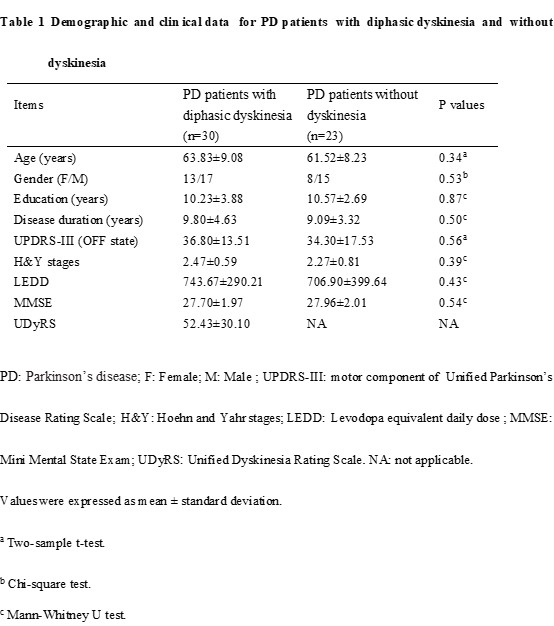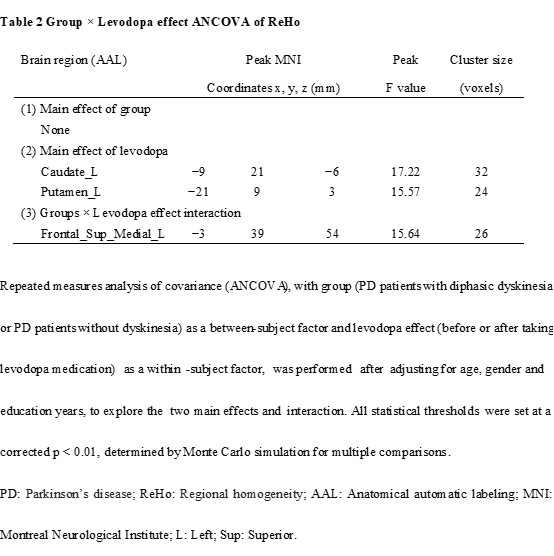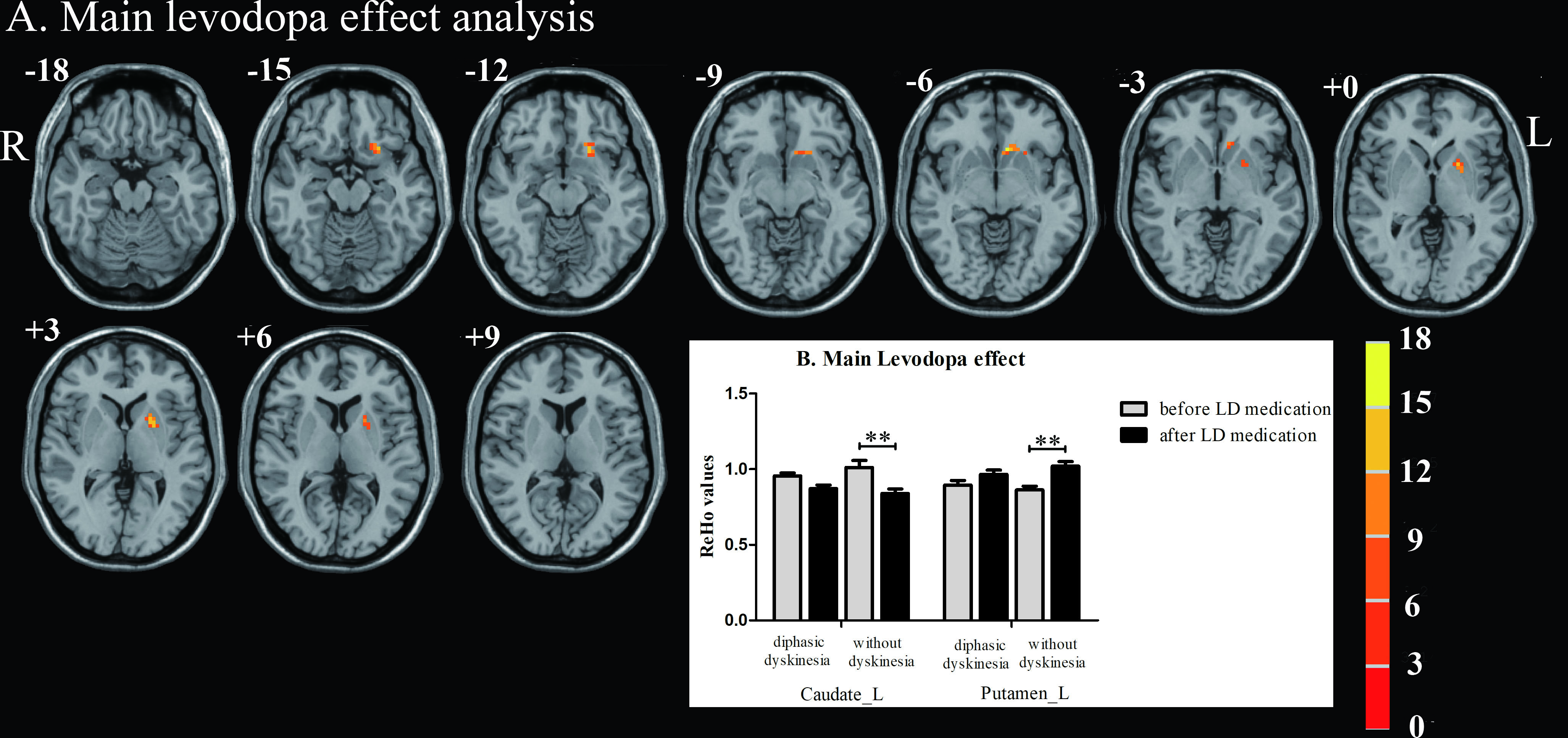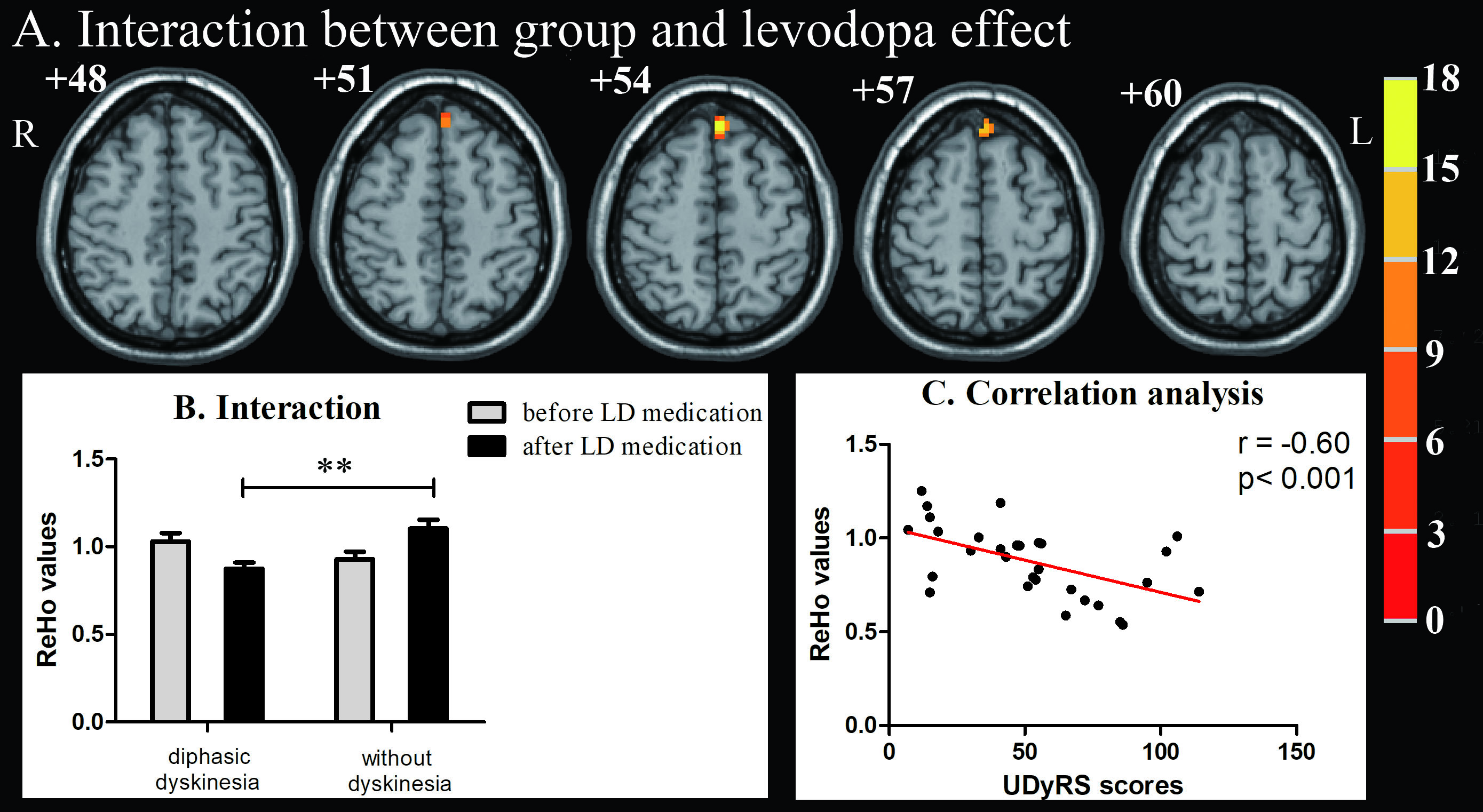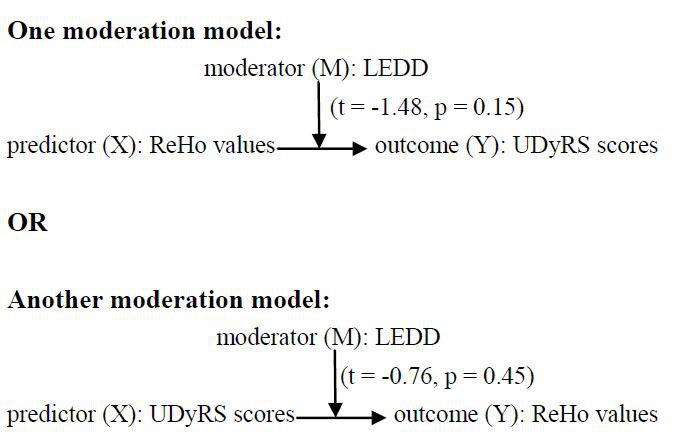Category: Parkinson's Disease: Neuroimaging
Objective: We aimed to explore alterations in regional brain function associated with diphasic dyskinesia in Parkinson’s disease (PD).
Background: Levodopa-induced dyskinesia (LID), which is a common motor complication in PD, can be subdivided into peak-dose dyskinesia, diphasic dyskinesia and off-period dystonia. Several studies have explored the functional changes in relevant brain regions in peak-dose dyskinetic patients, but to the best of our knowledge, alterations in brain function in patients with diphasic dyskinesia have not been investigated.
Method: A total of 53 levodopa-treated PD patients (30 with diphasic dyskinesia and 23 without dyskinesia) were recruited to the study. Each PD patient had two resting-state functional magnetic resonance imaging (rs-fMRI) scans in the same morning, before and after taking antiparkinsonian drugs, including levodopa. The regional homogeneity (ReHo) approach was used to reveal local synchronization changes. Two-way factorial repeated measures analysis of covariance, with group as a between-subject factor and levodopa effect as a within-subject factor, was performed to explore the two main effects and interaction. Interactive analysis was used to show outcomes that combined disease status and levodopa effect. Spearman’s correlations were used to detect associations between interactive brain regions and severity of dyskinetic symptoms, assessed by the Unified Dyskinesia Rating Scale (UDyRS) scores, along with moderation analyses.
Results: There was no significant difference in the main group effect analysis. Significantly different clusters obtained from main levodopa effect analysis were in the left caudate nucleus and putamen. ReHo values decreased in the caudate nucleus and increased in the putamen during the ON state after taking levodopa. Interaction between group and levodopa effect was found in the left medial superior frontal gyrus (mSFG), where there were the lowest ReHo values, and was negatively correlated with UDyRS scores in the diphasic dyskinetic group during the ON state. The relationship was independent of levodopa dose.
Conclusion: Abnormal local synchronization in the mSFG is closely associated with the development of diphasic dyskinesia in PD patients.
To cite this abstract in AMA style:
S. yuting, Z. kezhong. Dysfunction in superior frontal gyrus associated with diphasic dyskinesia in Parkinson’s disease [abstract]. Mov Disord. 2020; 35 (suppl 1). https://www.mdsabstracts.org/abstract/dysfunction-in-superior-frontal-gyrus-associated-with-diphasic-dyskinesia-in-parkinsons-disease/. Accessed December 26, 2025.« Back to MDS Virtual Congress 2020
MDS Abstracts - https://www.mdsabstracts.org/abstract/dysfunction-in-superior-frontal-gyrus-associated-with-diphasic-dyskinesia-in-parkinsons-disease/

